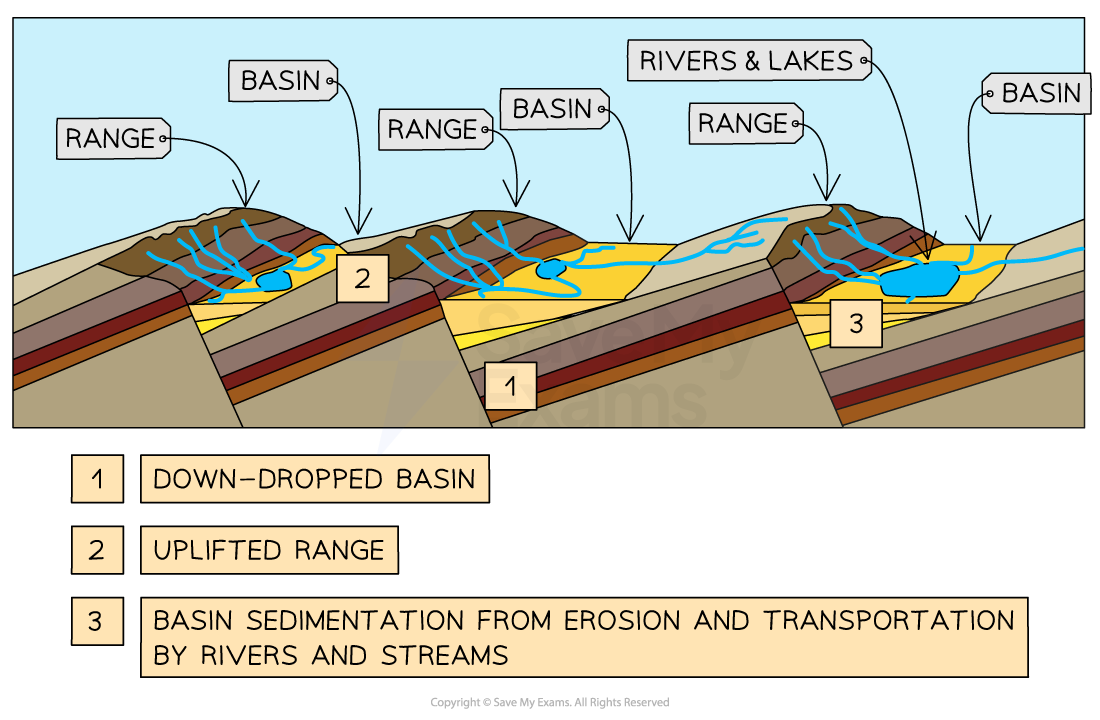Desert Development Over Time
- Each desert landscape is unique due to past and present interactions of rocks and processes operating on them
- Wind and water action are the most important processes, although weathering, mass movement and vegetation also play a role
- Processes operating in desert systems can create new landforms or change existing landforms
- This means that desert landscapes change over time
- Changes in inputs change the landscape, e.g. an increase in sediment input may increase deposition
- Over time the landscape would then change from an erosional landscape to one dominated by landforms of deposition
- Landforms of past processes can undergo further change
- A wadi formed by past river flow will be further eroded by the episodic sheet and channel flooding
- Hot desert landscapes are, therefore, made of a mixture of characteristics and landforms that reflect different periods of time
- Canyons formed when the climate was wetter (interglacial period ≈8000 years ago) and present-day landforms such as pedestals
- Changes occur over a range of spatial and temporal (time) scales
- Changes can be short and episodic such as flash floods transporting material in wadis
- Too long and gradual, such as wind eroding rock over thousands of years to form a pedestal rock
- Changes to desert landscapes occur slower than in other regions because many weathering and erosional processes need water
- The Atacama Desert can go years without rain, therefore, processes operate slowly and episodically there
Basin and range
- This topography develops in landscapes where past tectonic faulting has occurred through extension, deformation and sedimentation
- The horizontal extension of crustal plates stretches the area and faults appear
- Vertical deformation (displacement) takes place along these fault lines
- Creating a rising 'range' of mountains and a dropped valley 'basin'
- Mountains continue to erode, with streams carrying sediment down to the valley floor

Image showing the simplified formation of a basin and range landscape
Case study
- The Western US Basin and Range extends to the Rocky Mountains, South Central and Southwestern states
- It includes all of Nevada, south-eastern California and Oregon, with high mountain ranges running mostly north-south with alternating low valleys
- 20 million years ago, the crust along the Basin and Range stretched, thinned, and faulted into approximately 400 mountain blocks
- Upward pressure from the mantle, lifted some blocks, forming stretched peaks, whilst leaving the lower blocks to form down-dropped valleys
- Boundaries between the basins and ranges are acute (sharp) because the faults are straight between them
- Also, many of the faults are still active

Image showing the formation of the basin and range of the Sierra Mountains and Cascades, USA

